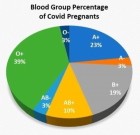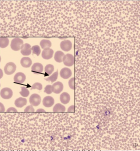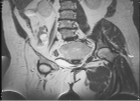Table of Contents
A Review on filaricidal activity of phytochemical extracts against filariasis and the Parasites Genomic Diversity
Published on: 26th October, 2018
OCLC Number/Unique Identifier: 7912403155
Filariasis is one of the Neglected Tropical Diseases (NTDs) known to be of serious public health importance and pose devastating socio-economic burden especially among the poor people in tropical and subtropical countries of the world. The parasite is responsible for lymphatic filariasis affecting about 1.3 billion people in 72 countries worldwide. The major parasitic agents of the infection are three closely related nematodes of clade Onchocercidaei namely Wuchereria bancrofti, Brugia malayi and B. timori that are transmitted to human through bites by mosquitoes of genera: Aedes, Anopheles, Culex and Mansonia. The disease is targeted by the World Health Organization (WHO) for elimination by 2020 through the use of chemically synthesized drugs used as therapeutic agents to cure the disease but there are some setbacks. Phytochemical extracts are viewed as alternative therapy in the management of the disease. Additionally, the species have many ecological variants and are diversified in terms of their genetic fingerprint. This diversification in terms of genomic sequences as well as rapid infection rate warrant the lymphatic filarial parasites to respond differently to diagnostic and therapeutic interventions. Thus understanding the genomic diversity of the parasite will help in efficient therapeutic management of the disease, thereby eliminating it to prevent unnecessary suffering and contribute to the reduction of poverty. In this review, we have highlighted on the used for phytochemical extracts in the therapeutic management of the lymphatic and the molecular genetic diversity of the parasite was delineated.
Trypanosoma dionisii as an experimental model to study anti-Trypanosoma cruzi drugs: A comparative analysis with benznidazole, posaconazole and amiodarone
Published on: 17th October, 2018
OCLC Number/Unique Identifier: 7900067313
Chagas disease is a public health problem in Latin America and its treatment is based on the use of benznidazole or nifurtimox compounds. Both present problems such as resistance, inefficiency in chronic infection and cytotoxic effects. New compounds such as posaconazole and amiodarone have been tested against T. cruzii and shown to be effective. In addition, new molecules have been synthesized and tested against T. cruzii. Because this protozoan is highly pathogenic, even with a number of cases of accidental laboratory infections, few laboratories located outside Latin America are authorized to work with its infective developmental stages. On the other hand, Trypanosoma dionisii is a non-pathogenic protozoan phylogenetically related to T. cruzii and that shares similar strategies to complete its life cycle in mammalian cells in vitro. Here, we describe a comparative analysis of the sensitivity of both parasites to benznidazole, posoconazole and amiodarone. We also analyzed the morphological effects of these compounds on both Trypanosoma species using electron microscopy. Our results show that T. dionisii is more sensitive to the compounds tested than T. cruzii. They also support a previous suggestion that it may constitute an excellent model for large scale screening of compounds against T. cruzii.
Evaluation of novel culture media prepared from plant substrates for isolation and identification of Cryptococcus Neoformans Species Complex
Published on: 14th August, 2018
OCLC Number/Unique Identifier: 7844645048
Background: Melanin production due to phenoloxidase activity is a distinctive property of Cryptococcus neoformans and Cryptococcus gattii species complex yeasts. Therefore, an agar medium containing a precursor of melanin pigment is potentially useful to identify and differentiate cryptococcal colonies from other yeasts.
Background: This study aimed to evaluate and compare the ability of Cryptococcus neoformans species complex isolates to produce brown-pigmented colonies when grown on media prepared from various plant leaves or seeds extracts.
Material and Methods: Forty-six C. neoformans species complex isolates which were obtained from various environmental and clinical samples were inoculated on different media containing coriander, cumin, soybean, lupine, flax, pumpkin, basil, peppermint, and marjoram, were observed for the rate of growth and pigment production during a five-day period.
Results: All isolates were pigmented on all media within 24-48 hours, and brown or dark brown colonies were observed in less than five days, while C. albicans grew but did not produce any pigment.
Conclusion: The differential media tested in the present study are simple and inexpensive, and represent alternative valid tools for presumptive identification of C. neoformans species complex from clinical and environmental samples
Oral Candida colonization in HIV-infected patients: Species and antifungal susceptibility in Tripoli/Libya
Published on: 3rd August, 2018
OCLC Number/Unique Identifier: 7844539006
Introduction: Candidiasis is more frequent in human immunodeficiency virus (HIV)-infected patients and knowledge about the distribution and antifungal susceptibility of oral Candida species is important for effective management of candidiasis.
Material and Methods: An oral rinses sample collected from hundred HIV-infected patients with and without clinical evidence of oral candidiasis in this study at the Infectious Department/Tripoli Medical Center, Libya. Species identified by standard phenotypic and conventional methods and in vitro susceptibility testing of the yeast isolates to antifungals were performed using the Disc diffusion method protocol as recommended by the Clinical Laboratory Scientific Institute.
Results: Oral Candida colonization is detected in all patients with and without clinical syndromes, and Candida albicans were accounted for (74%), C. dubliniensis (11%) and C. glabrata (6%). A high proportion of Candida species (42%) showed decreased susceptibility to fluconazole. Among C., albicans more than 30% of isolate were resistant to most new azole antifungal including fluconazole, itraconazole, posoconazole and voriconazole.
Conclusions: A significant number of oral Candida species particular Candida albicans exhibiting decreased susceptibility to fluconazole were isolated from colonized HIV-infected individual, given the high incidence and severity of fungal infections in HIV-infected individuals. The results of this study reinforce the importance of antifungal susceptibility testing, which contributes to the therapeutic strategies and highlights the need for continuous surveillance of Candida colonization in this population.

If you are already a member of our network and need to keep track of any developments regarding a question you have already submitted, click "take me to my Query."
















































































































































